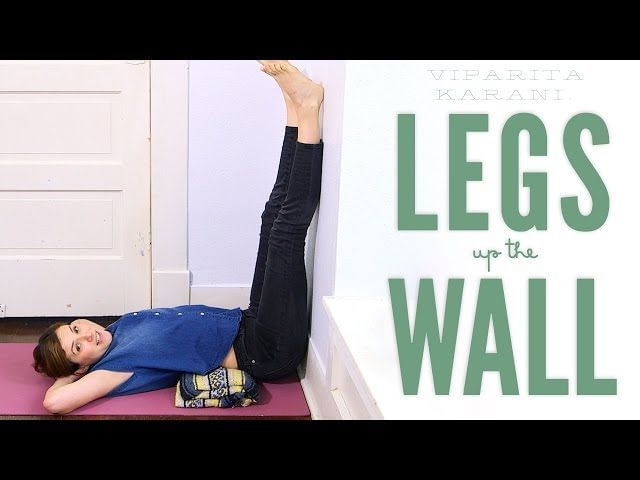The Viparita Karani yoga pose (legs against the wall) is an amazing beginner-level relaxation exercise. This can be done before or after a yoga or Pilates session or anytime you want to relax your body and need stress relief. This yoga pose benefits your entire body but largely targets your legs and helps calm your body and mind.
You can practice this pose for a few minutes or for 10 to 15 minutes, depending on your strength and flexibility. Viparita Karani is one of the best poses that you can do to meditate and relax or use it to finish any exercise session.
How to perform the Viparita Karani pose in yoga? Correct form and technique
Since this is a restorative and inversion pose, you can keep a pillow, folded blanket, or brace by your side while doing this pose.
Follow the instructions below to accurately perform the cross-legged position on the wall:
- Place a yoga or pilates mat perpendicular to the wall.
- Sit next to a wall with your feet on the floor extended in front of you, and the left side of your body directly touching the wall. Keep your hips and shoulders as close to the wall as possible.
- Slowly rotate your body so that your feet and legs are up against the wall. Keep your head away from the wall and lie down. Keep your legs straight, but don’t lock your knees.
- Keep your hips and shoulders in a straight line, and your back and spine straight.
- Move your shoulders away from your ears, and keep your arms relaxed at your sides with your palms up or down.
- Make sure your body weight is completely balanced side by side.
- Relax your body Lie in this position for a few seconds, and take some deep, easy breathing.
- Release your stress as much as you can, and feel the weight of your legs descend through your hips onto the floor.
- Once you feel relaxed, get out of the pose by bending your knees toward your chest. Slowly move your body to the side and push your body through your knees and hands.
- Push your body weight back into your legs, standing in a standing position. You can even slowly roll your spine, or stay folded at your hips. Use your hands to help yourself get up.
Here is a video for your reference:
Benefits of Viparita Karani in Yoga
Krani viparita is relaxing and calm. It helps improve blood circulation and also reduces lower extremity swelling by distributing fluids from your knees, pelvic organs and ankles over your head and entire body.
It activates the parasympathetic nervous system (relaxation response) and turns off the sympathetic nervous system (stress response). Apart from that, the Viparita Karani yoga pose has other benefits, including:
- It extends the back of the legs, torso, and the back of the neck.
- Helps relax the legs and feet.
- Helps calm the mind.
The Viparita Karani yoga pose also offers therapeutic benefits for many health issues, including arthritis, digestive issues, anxiety, migraines, urinary disorders, headaches, blood pressure, respiratory problems, varicose veins, insomnia, menopause, and depression. Mild, premenstrual syndrome.
Common mistakes
Although this mode is easy, be sure to avoid these common mistakes:
do not hold your breath: When performing the Viparita Karani pose in yoga, make sure that you are breathing constantly. Do not hold your breath, but take deep, conscious breaths, as proper breathing makes this pose calmer.
Don’t move so fast: When entering or exiting this position, perform each movement slowly, and do not twist or force any action. This is especially important if you don’t have a lot of agility and flexibility and find it difficult to bounce back or descend into a position.
summary
The viparita karani pose in yoga is a mild inversion pose, so it should not be performed during menstruation.
You should also avoid this asana if you suffer from glaucoma or serious neck or back problems. Always remember to practice this pose under the guidance of a yoga instructor, and follow proper form. If you feel any tingling in your ankles or feet, try bending your knees and touching your soles. Bring your heels close to your pelvis. And relax.
.


Commentaires
Enregistrer un commentaire